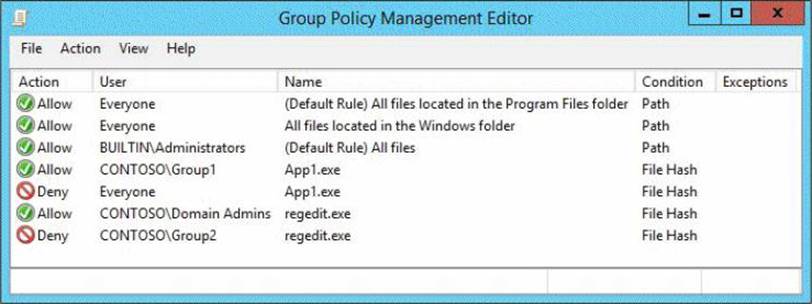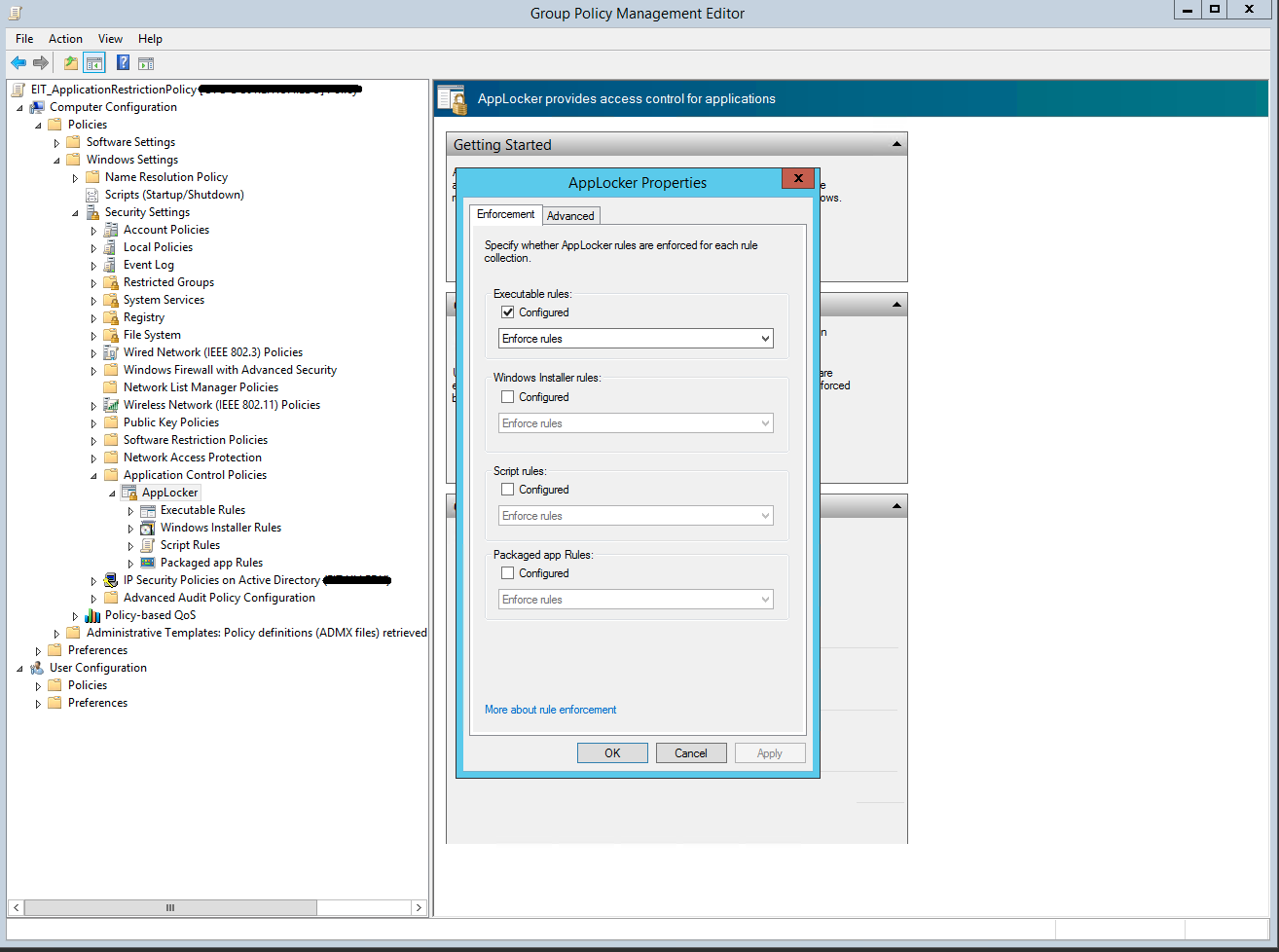
- #APPLOCKER GPO SERVER 2012 LOCATION UPDATE#
- #APPLOCKER GPO SERVER 2012 LOCATION SOFTWARE#
- #APPLOCKER GPO SERVER 2012 LOCATION WINDOWS 8#
- #APPLOCKER GPO SERVER 2012 LOCATION DOWNLOAD#
- #APPLOCKER GPO SERVER 2012 LOCATION WINDOWS#
#APPLOCKER GPO SERVER 2012 LOCATION UPDATE#
Step 2: Identify and modify the rule to change, delete, or addįor steps to test an AppLocker policy, see Test and Update an AppLocker Policy. Importing a policy onto another computer will overwrite the existing policy on that computer. Step 4: Use AppLocker and Group Policy to import the AppLocker policy back into the GPO Step 3: Use AppLocker to modify and test the ruleĪppLocker provides ways to modify, delete, or add rules to a policy by modifying the rules within the collection.įor the procedure to modify a rule, see Edit AppLocker Rules.įor the procedure to delete a rule, see Delete an AppLocker Rule.Ĭreate a Rule That Uses a Publisher ConditionĬreate a Rule That Uses a File Hash Conditionįor steps to test an AppLocker policy, see Test and Update an AppLocker Policy.įor procedures to export the updated policy from the reference computer back into the GPO, see Export an AppLocker Policy to an XML File and Import an AppLocker Policy into a GPO. For the procedure to import an AppLocker policy, see Import an AppLocker Policy from Another Computer. Step 2: Import the AppLocker policy into the AppLocker reference computer or the computer you use for policy maintenanceĪfter exporting the AppLocker policy to an XML file, you should import the XML file onto a reference computer so that you can edit the policy. For the procedure to do this, see Export an AppLocker Policy from a GPO. Because updating an AppLocker policy in a deployed GPO could have unintended consequences, you should first export the AppLocker policy to an XML file. This allows you to modify an AppLocker policy outside your production environment.
#APPLOCKER GPO SERVER 2012 LOCATION SOFTWARE#
The steps to edit an AppLocker policy distributed by Group Policy include the following: Step 1: Use Group Policy management software to export the AppLocker policy from the GPOĪppLocker provides a feature to export and import AppLocker policies as an XML file. There are two methods you can use to edit an AppLocker policy:Įditing an AppLocker policy by using Group PolicyĮditing an AppLocker policy by using the Local Security Policy snap-in For information about merging policies, see Merge AppLocker Policies Manually or Merge AppLocker Policies by Using Set-ApplockerPolicy. The AppLocker policy is saved in XML format, and the exported policy can be edited with any text or XML editor. You must create one rule collection from two or more policies. You cannot automatically merge policies by using the AppLocker snap-in.

#APPLOCKER GPO SERVER 2012 LOCATION WINDOWS#
If you have created multiple AppLocker policies and need to merge them to create one AppLocker policy, you can either manually merge the policies or use the Windows PowerShell cmdlets for AppLocker. To modify an AppLocker policy that is in production, you should use Group Policy management software that allows you to version Group Policy Objects (GPOs).

However, you cannot create a new version of the policy by importing additional rules. You can edit an AppLocker policy by adding, changing, or removing rules. This topic describes the steps you need to perform to modify an AppLocker policy in Windows Server 2012 and Windows 8.
#APPLOCKER GPO SERVER 2012 LOCATION WINDOWS 8#
Not a single entry the entire time.Applies To: Windows 8.1, Windows Server 2012 R2, Windows Server 2012, Windows 8 Open to most suggestions, no matter how ludicrous they may sound.įorgot to add that I checked the event log for AppLocker during this whole fiasco, and it was blank. I used the Test-AppLockerPolicy cmdlet to verify that the rule is should be blocking the EXEs and MSIs from running, but it doesn't. I correctly applied the policy to the machine and verified that the rules are enforced (it says so in the screenshot). I added the deny rules explicitly because the default rules weren't working. Below is a screenshot of the current policy. The policy still didn't work after restarting.

It was at that point I did more googling, and saw that the App Identity service had to be running, and it wasn't: So, like any good admin, I started it, set it to automatic, and rebooted just in case.
#APPLOCKER GPO SERVER 2012 LOCATION DOWNLOAD#
After deploying this policy and verifying it was being applied to the correct user using gpresult, I was still able to download and run an exe from the internet, an exe that was saved to the user profile's temp folder. Per Microsoft's technet article on the subject, any files not explicitly allowed to run by the policy are supposed to be blocked from running.

I've setup a basic group policy consisting of the default Applocker rules.


 0 kommentar(er)
0 kommentar(er)
